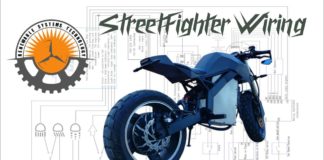
It’s not just energy efficient washing machines that have created the buzz in the last decade. We also have energy efficient homes, energy efficient windows, energy efficient TV sets – anything that’s built or manufactured it seems has to have the word “energy” written all over it. Of course that’s an exaggeration, but the fact is, we’ve all become keenly aware of the need to save energy and use it more efficiently than we have in the past.
Respect for the environment and preservation of natural resources – that’s the mantra that governs our lives these days. And that mantra could very well save our planet so future generations can enjoy the bounty of Mother Nature, as the saying goes.
Characteristics of Energy Efficient Washing Machines
Energy Star® is a label that’s prominently displayed on most appliances and household goods. It’s the internationally accepted symbol that signifies that the product you’re buying has passed government standards for Energy Star® certification. Enlightened consumers who buy anything from a simple electric switch to a major appliance now look for this symbol. It’s their way of saying, “yes we care about the environment.”
But apart from the Energy Star® symbol, what makes washing machines energy efficient? What are their characteristics?
A visit to the government’s natural resources web site gives us an idea of things to look for when buying energy efficient washing machines. It also produces a list of Energy Star® certified washing machines that can be purchased from your local appliance retailer.
In 1990, washing machines were “energy-holics”, using up to 1,218 kilowatt hours per year. In 2003, that consumption went down to 883. But did you know that machines with the Energy Star® sticker consume only 296 kilowatt hours per year? If you compare this number with 1,218 and 883, you’ll realize why you’d want to own only the most energy-efficient appliances even if it means paying a few more dollars for them.
When shopping for energy efficient washing machines, watch out for these features:
- Flexible water fill controls
- More options for cold water rinsing
- For the “warm” setting, usage of less hot water and more cold water
- Good mixing valves
- Increased spinning speed
- Does it use Ultrasonic technology
- Energy Star® sticker – this means that the machine uses 40% less water and 50% less energy. They also require a lower amount of detergent.
Before buying your next washing machine, ask the sales representative if there are more water controls or if the machine comes with a small load basket. This allows you to use less water for smaller laundry loads.
Ask the salesman about the machine’s EnerGuide rating. The lowest rating is usually the best. The EnerGuide black and white label is an initiative of the Government of Canada which provides five key points about the product:
- Average energy consumption in kilowatt hours per year
- Energy efficiency rating of the appliance compared to similar models
- Annual energy consumption range for models of the type and size of machine you’re purchasing
- Type and size of the model
- Model number
The EnerGuide label is frequently displayed on appliances along with the EnergyStar® symbol.
Tips for Buying Energy Efficient Washing Machines
Tip # 1. Consider front load machines. They might be more awkward because you’d have to bend to load your laundry, but they’re huge energy savers. One reason is because they don’t have agitators. The agitation is done by gravity when the tub is spinning. That’s a bonus because that equates to lower wear and tear on your clothes.
Tip # 2. If you’re single and don’t have large loads of laundry, consider compact-size machines. They use less water.
Tip # 3. Look for machines that are equipped with sensors. These sensors enable the machine to “read” how large a load you have and based on that will automatically choose the appropriate amount of water required for the wash.
Tip # 4. Look also for advanced high speed motors. They reduce spinning time since they extract more water from the clothes within a shorter time, reducing the energy required to dry them in the dryer.
Tip # 5. If your family generates substantial laundry, buy a large capacity machine because this enables you to do more clothes per laundry session. It also enables you to reduce the frequency of doing laundry. While large capacity washers may use more energy, you’d actually be cutting the number of times you have to do laundry per week because you can load more clothes each time, instead of repeating full cycles.
Tip # 6. Select machines that come with several programmed cycles and water levels. These options allow you to save on two valuable resources: electricity and water. For instance, if your clothes aren’t very dirty, choose a gentle cycle, and if you have a small load, go for less water by choosing “small.” This way the machine will not spend those extra minutes filling the tub with water to the max. As a corollary, choose a machine with a load sensor. It does the thinking for you. If you have a small load, it spews out just the right amount of water for that particular load.
Tip # 7. Be selective about washing temperatures. Again, if your clothes are not that dirty or have no problematic stains, you may want to opt for cold water. Washing at 40° versus at 60° translates into a 1/3 energy savings.
Tip # 8. We found this tip from an online article – choose a horizontal axis washer. As explained by the writer, horizontal axis machines can wring more water out, enabling you to shorten the drying cycle, which then translates into less energy being used.
Washing Machine Brands with Energy Star® status
This list is not an exhaustive one. Here’s a partial listing that you could look into:
- Admiral
- Amana
- Bosch
- Eurotec
- General Electric
- Hotpoint
- Inglis
- Kelvinator
- Kirkland
- Kitchen Aid
- LG
- Samsung
- Whirlpool
…and many others!







































